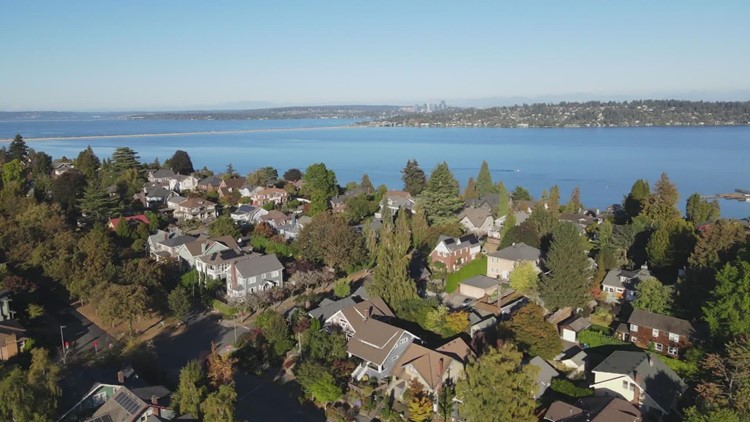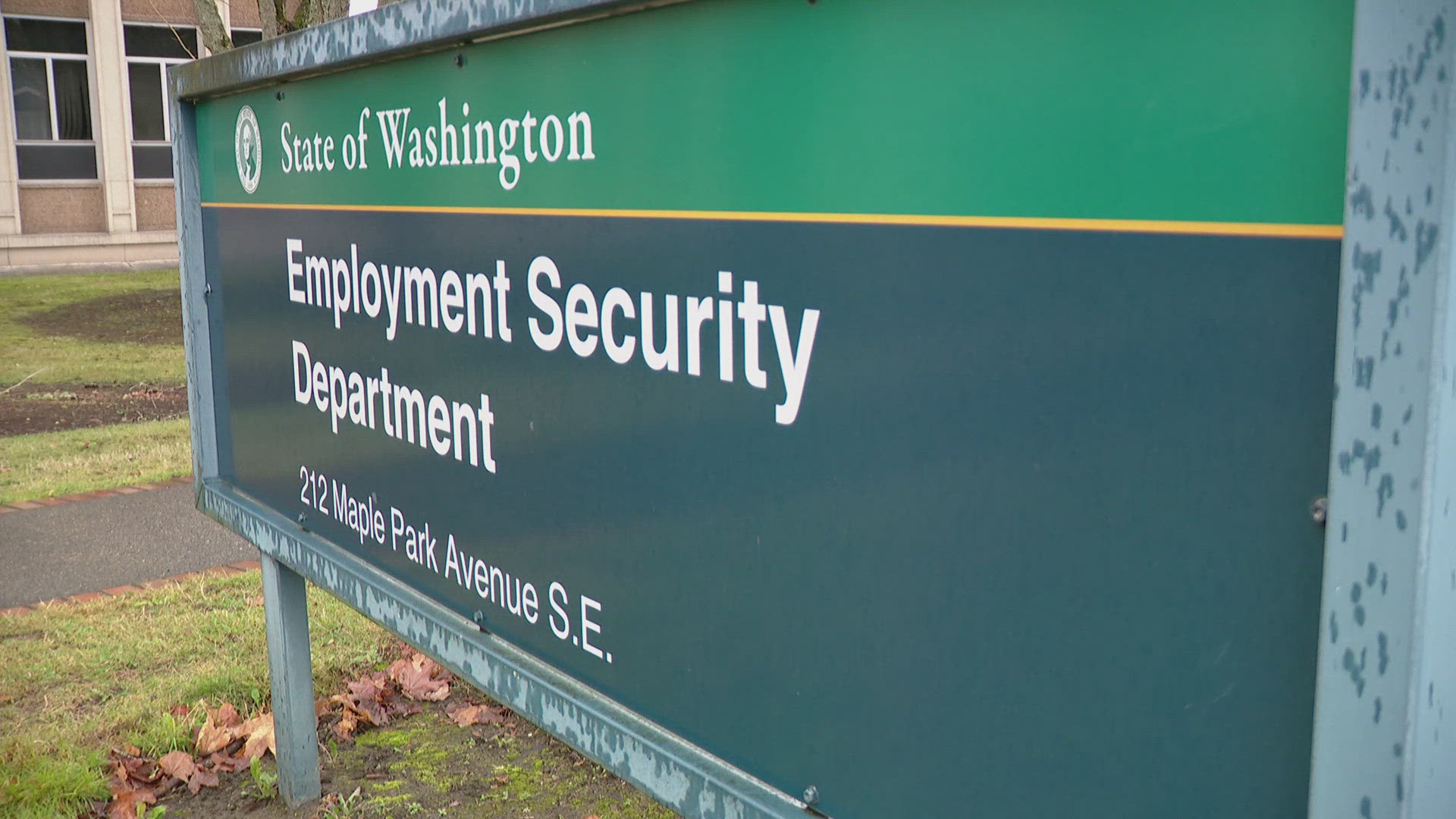SEATTLE — A new report from the Puget Sound Regional Council (PSRC) revealed rents and home values have risen sharply and that homeownership is increasingly less likely for people of color across western Washington.
The monitoring report, which was released this month, is a part of Puget Sound Regional Council’s Regional Housing Strategy. The Regional Housing Strategy is described as a “playbook” to improve housing stock in the region.
"Coming out of the Great Recession, it took a long time for the housing industry to get back in the business of building housing," PSRC Executive Director Josh Brown said. "But our economy, especially driven by the tech sector in King County, rebounded a significant amount of jobs very quickly, and this decade, we're very much behind in terms of building enough housing to be able to keep pace for job growth."
Brown says, fortunately, the rate of housing construction has risen- but it is, in a way, a game of catch-up. He says policy work happening in cities, counties and at the statewide level could potentially empower faster replenishment of supply.
"Particularly for homeownership we're seeing a desperate need for what we often refer to as missing middle housing," Brown said. "Townhouses, that fit really well within established single-family neighborhoods, but we're not building nearly enough missing middle townhouses to keep up with the demand that's off the chart."
The report looked at a number of key housing measurements in King, Pierce, Snohomish and Kitsap counties.
According to the report, the typical rent rose 60% and home values skyrocketed 135% in the region since July 2014. Rent rose from $1,462 to $2,346 from July 2014 to July 2022 while home values went from $332,500 to $781,600.
The report also identified it is getting harder for prospective first-time home buyers to own a home.
According to the Washington Center for Real Estate Research’s (WCRER) Housing Affordability Index, first-time buyer housing affordability has reached its lowest point since WCRER began tracking it in 2012. Affordability has been decreasing the past two years across King, Pierce, Snohomish and Kitsap counties, with King County being the least affordable for first-time buyers.
The second quarter of 2022 marked the first time in the past decade that all four counties ranked below the balance between income and home prices, indicating a broad shortage of affordable homes.
The home loan denial rate is also higher for people of color, according to the report, making the journey to homeownership even harder. Mortgage loan applications are denied at a higher rate, above the regional denial rate of 10%, for people of color compared to white applicants in the region.
According to the report, the homeownership rate for white households, 66%, is twice the rate for Black households at 31%. Even after adjusting for household income, homeownership rates for people of color's households fall far short of rates for white households, the report said. Asian households also lag behind white homeownership, despite median household income for Asians exceeding white households.
"I think people really care about equity in our region, and what we're trying to do is report on homeownership and how communities of color are disproportionately impacted by housing affordability, and numbers are staggering in our region," Brown said. "Housing is really front of center for most families. Housing is how you build generational wealth."
The region needs more housing of varied types in all communities, according to the Puget Sound Regional Council. The council said there is already a backlog of around 50,000 units to address current housing gaps. The region needs over 800,000 new units through the year 2050 to accommodate housing needs, according to the council.
While most of the report's prescriptions focus on ways to empower the market to provide more affordable housing, some local nonprofits are also pitching alternative approaches. "House Our Neighbors" is currently canvassing for I-135, a Social Housing proposal that Seattle voters will decide on in November.
"Even though Seattle, for instance, is making investments in affordable housing, we have to be honest with the public that we are not on a trajectory to meet that goal," Tiffani McCoy said. "We are making positive steps, we can't pat ourselves on the back too quickly- we have a ton of work to do and that's why we need new and innovative solutions into the housing market."
McCoy says the report's data was not particularly surprising, but that it is sobering.
"Do we want this city to be one where only the ultra-rich and folks who are making middle to high six-figure salaries can live here?" McCoy asked. "Or do we want to make sure Seattle's accessible to anyone who lives or works here, so they don't have to worry, 'Is this going to be the rent increase that will send me out of the city?'"
Camille Gix, a graduate student who works part-time at Real Change, says she is currently facing a lack of affordability.
"On a part-time income, my husband and I, he's an immigrant who does not have a work permit yet- we are completely unable to afford anything that's available so we live with our parents," Gix said. "We're almost 30 and it's the only option that allows us to afford food and still live in Seattle so I can study."
Gix says if housing prices skyrocket out of pace with wages, Seattle loses so much of what makes it what it is.
"We lose a diversity of workforce, a diversity of thought, if the only people who are able to live in the city are those making six-plus figure incomes or have generational wealth or have been homeowners since the early 90s like my parents," Gix said.



